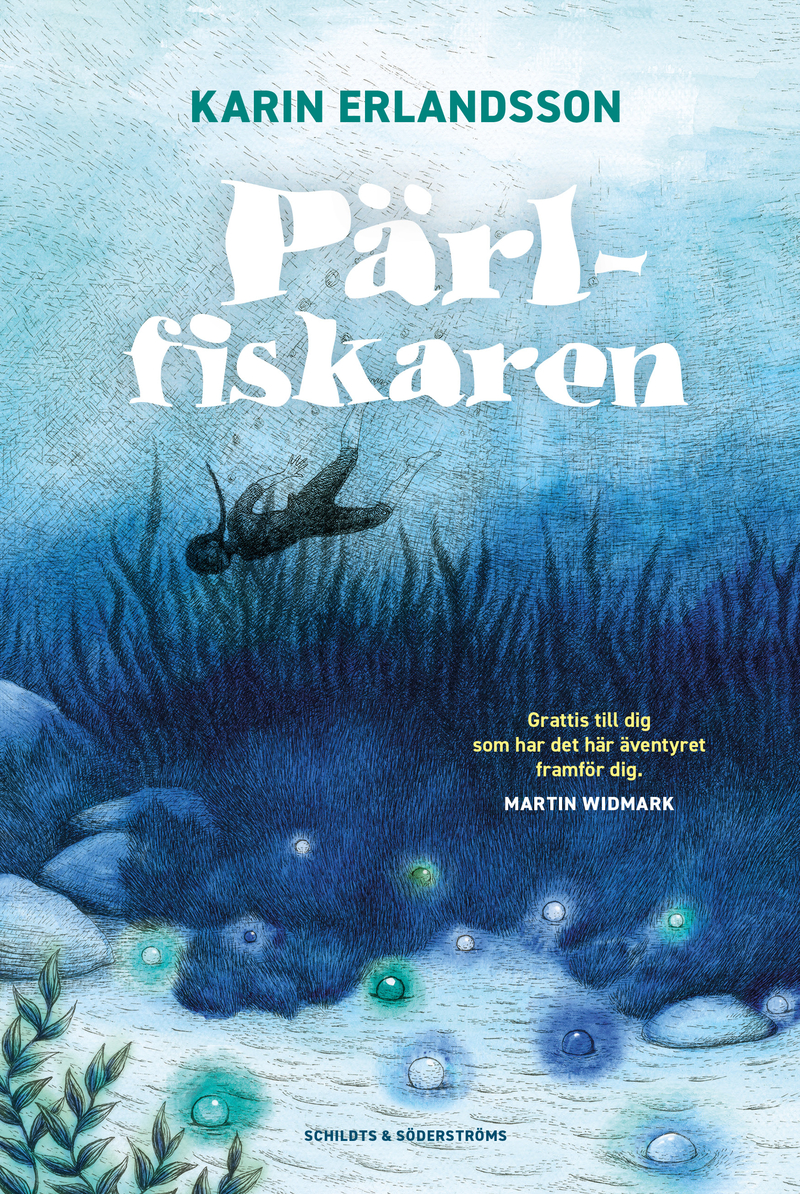Karin Erlandsson (Finland)

The Treasure Pearl has lured pearl divers since the dawn of time. The longing felt by the pearl diver is immeasurably strong, which is why she can leave her family and home without missing them. And yet she is missed, deeply, by those left behind.
The season for pearl diving is in full swing and the pearl diver Miranda is enjoying reaping the treasures the ocean has to offer. She considers herself to be the best. Since the time when her father was lured by the Treasure Pearl and went missing, she has dived with his friend, who dumps on her the notoriously talkative Syrsa with her unruly tufts of hair. She is annoyed by her company and treats Syrsa accordingly.
When the queen announces a new hunt for the Treasure Pearl, Miranda is convinced that she’s the one for the job. The hunt is not without danger. Clam fungi (Compresa compresa) can close in around pearl divers and swallow them. Shivers of sharks (Rosa heprantica) surround the pearl reefs. They have already maimed the girls with their bloodthirsty wrinkled snouts, taking an arm from each of them and turning the ocean red with their blood. The text seldom draws attention to the fact that the girls have only one arm; rather, it is just taken for granted. The novel thus puts a question mark over which bodies are functional and which are not. With her one-armed girls, Erlandsson takes a stand for diversity. Tuuli Toivola gives the book’s colourful fantasy world a timeless touch with her black-and-white illustrations.
The stakes are sky-high in this classically structured story of longing, belonging, and survival. The narrative is a strong supporting element in this multi-layered yet cohesive novel portraying the pearl divers’ hunt for the elusive Treasure Pearl, which will put an end to their longing. Erlandsson masters this element. She effortlessly allows the story to billow along. Gradually Miranda realises that the tiresome Syrsa is the treasure, and that it is sisterhood that is most worth pursuing:
“Did you find the Treasure Pearl?”
“In a way,” I say. “But on the whole we found something better.”
Maps and directions are a key element, just as they should be in a fairytale. As the road takes them closer to enlightenment, the girls come across Tekla the lighthouse keeper in a Tove Jansson-inspired episode before continuing to the Hildegard school in the north of the region and the city where the ocean ends, where they find the former pearl diver Lydia. Girls and women are put at the heart of the story throughout. Even the tale’s more evil moments have to do with a feminine figure, the evil Iberis, who radiates cold and wants the Treasure Pearl for herself. The icy threat of her greed runs throughout the story.
The underwater scenes are suggestive. Syrsa’s broad smile as she follows Miranda into the depths can barely be contained within the aperture of the diving helmet. The girls’ tranquil glide like starfish down to the ocean floor to fill their knapsacks with pearls is just one of the details that make the text credible.
Pärlfiskaren has broad and obvious appeal. It goes beyond the traditional fairytale by challenging conventions, while retaining an elegant reverence of the traits of the genre.
Erlandsson’s debut in children’s literature, Pärlfiskaren, was crowned the winner of Schildt & Söderströms’ Berättelsen är bäst! competition in 2016. She received the Runeberg Junior Prize and the Swedish Literature Society Award in 2018. Erlandsson was nominated for the Nordic Council Literature Prize in 2015 for the novel Minkriket (2014). She has also published the thrillers Pojken (2018), Missdåd (2016), and the cookbook Sött og nött (2012). Erlandsson won first prize in the Solveig von Schoultz competition in 2012 and third prize in the Arvid Mörne competition in 2002 for her poems.